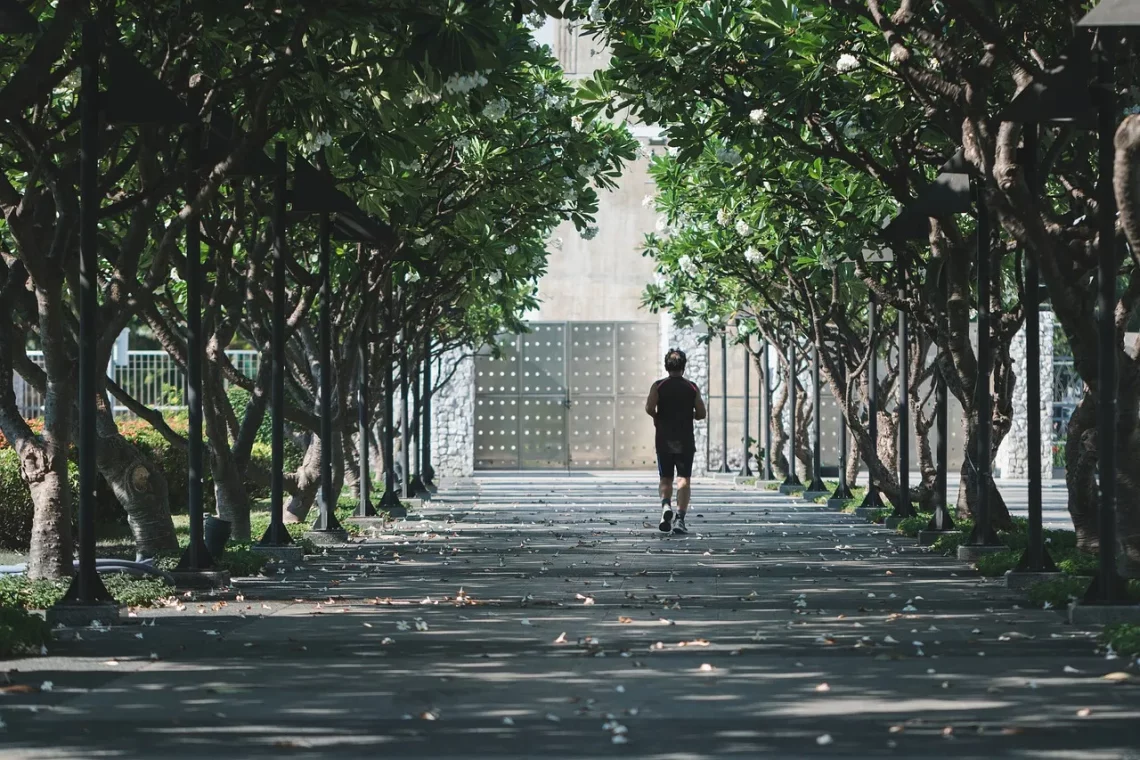
Unlocking the Benefits of Glute Press for Stronger Legs and Glutes
The glute press is a powerful exercise that effectively targets the gluteal muscles and their surrounding areas. As more individuals strive for fitness, the focus on shaping and strengthening the lower body has gained significant traction. It is no longer enough to simply perform a few squats or lunges; people are increasingly seeking specialized movements that can enhance their workout routines and provide comprehensive benefits.
Understanding the anatomy of the legs and glutes is essential for anyone looking to improve their strength and aesthetics. The gluteus maximus, medius, and minimus work in harmony to facilitate movement and stabilize the body during various activities. By engaging these muscles through targeted exercises like the glute press, individuals can unlock their full potential, leading to improved athletic performance and enhanced overall functionality.
Moreover, strengthening the glutes is not just about aesthetics; it plays a crucial role in injury prevention and postural alignment. Many people suffer from lower back pain or knee issues, often stemming from weak glute muscles. By incorporating glute-centric movements into your fitness routine, you can create a more balanced and resilient lower body, setting the stage for long-term health benefits. As we explore the numerous advantages of the glute press, the transformative power of this exercise will become evident, highlighting its significance in any well-rounded fitness regimen.
Understanding the Anatomy of the Glutes
To fully appreciate the benefits of the glute press, it’s essential to delve into the anatomy of the gluteal muscles. The glutes, comprised of three primary muscles—the gluteus maximus, gluteus medius, and gluteus minimus—play a pivotal role in lower body strength and mobility.
The gluteus maximus is the largest muscle in the body and primarily responsible for hip extension, outward rotation, and abduction of the thigh. This muscle is crucial during activities like running, climbing, and jumping. The gluteus medius and minimus, located on the side of the hip, assist in stabilizing the pelvis during walking and other movements. Together, these muscles work to support the hip joint and maintain proper alignment.
A deeper understanding of these muscles can guide individuals in optimizing their workouts. When executing the glute press, focusing on the activation of these muscles can enhance the effectiveness of the exercise. Proper form and technique are paramount; misalignment or inadequate engagement of the glutes can lead to suboptimal results and potential injuries.
Moreover, the health of the gluteal muscles extends beyond aesthetics. Weak glutes can contribute to poor posture and alignment, which may result in discomfort or pain, particularly in the lower back and knees. By strengthening the glutes, individuals can improve their overall body mechanics, enhancing performance in daily activities and sports.
Incorporating a variety of exercises that target the glutes, including the glute press, can yield significant improvements in strength, endurance, and overall fitness levels. A well-rounded approach to training the glutes not only promotes muscle growth but also fosters functional strength, enhancing one’s ability to perform at their best.
The Benefits of the Glute Press Exercise
The glute press offers a multitude of benefits, making it a staple in many training regimens. One of the primary advantages is its ability to effectively isolate and target the glute muscles. Unlike traditional squats or deadlifts, which engage multiple muscle groups, the glute press allows individuals to focus specifically on strengthening the glutes.
This isolation can lead to improved muscle hypertrophy, resulting in a more defined and aesthetically pleasing posterior. Many fitness enthusiasts prioritize glute development for its visual appeal, and the glute press is an excellent tool for achieving this goal.
Additionally, the glute press contributes to enhanced athletic performance. Strong glutes play a crucial role in generating power and explosiveness during high-intensity activities. Athletes in sports such as sprinting, jumping, and cycling can benefit from incorporating the glute press into their training routines. By developing stronger glutes, athletes can improve their sprinting speed, jumping height, and overall agility.
Another significant advantage of the glute press is its ability to promote stability and prevent injuries. Weak glute muscles can lead to imbalances and compensatory movement patterns, increasing the risk of injury. By strengthening the glutes, individuals can create a more stable base for their movements, reducing the likelihood of strains and sprains.
Furthermore, the glute press can aid in improving overall posture. Strong glutes help support the pelvis and lower back, promoting a more aligned and upright stance. This is particularly beneficial for individuals who spend extended periods sitting or engaging in activities that may lead to poor posture.
Incorporating the glute press into a balanced workout routine can provide both aesthetic and functional benefits, making it a valuable addition for anyone looking to enhance their lower body strength and overall fitness.
Incorporating Glute Press into Your Workout Routine
Integrating the glute press into your workout regimen can be straightforward and effective. First, it’s essential to choose the right variation of the glute press that aligns with your fitness level and goals. The exercise can be performed using various equipment, such as resistance bands, dumbbells, or machines, allowing for versatility and adaptability.
For beginners, starting with bodyweight glute presses can build a solid foundation. Lying on your back with your feet planted on the ground, lift your hips toward the ceiling, engaging your glutes throughout the movement. As strength develops, you can progress to weighted variations by adding resistance bands or weights to increase the challenge.
When incorporating the glute press into your routine, consider pairing it with complementary exercises. Combining the glute press with movements such as squats, lunges, or hip thrusts can create a comprehensive lower body workout. Additionally, integrating core exercises can enhance stability and further engage the glutes during the press.
It’s essential to focus on proper form during the glute press to maximize benefits and minimize the risk of injury. Maintaining a neutral spine, engaging the core, and ensuring that the knees do not extend past the toes are crucial elements of proper technique. Performing the exercise in a controlled manner, with a focus on muscle engagement, can lead to optimal results.
Lastly, consistency is key. Aim to incorporate the glute press into your workouts 2-3 times a week, allowing for adequate recovery time between sessions. Over time, you will likely notice improvements in strength, muscle definition, and overall lower body performance.
As with any exercise program, it’s advisable to consult with a fitness professional or trainer to ensure you are performing exercises correctly and safely. They can provide personalized guidance and modifications based on your individual needs and goals.
Common Mistakes to Avoid When Performing the Glute Press
While the glute press is a highly effective exercise, there are common mistakes that can hinder your progress and lead to injury. Being aware of these pitfalls is crucial for anyone looking to maximize the benefits of this movement.
One of the most prevalent mistakes is failing to engage the glutes properly. Many individuals may rely too heavily on their hamstrings or lower back, diminishing the effectiveness of the exercise. To counteract this, focus on consciously activating your glutes before initiating the movement. Squeeze the glutes at the top of the press to ensure they are doing the majority of the work.
Another common error is allowing the knees to extend too far forward during the exercise. This can place undue stress on the knee joints and lead to discomfort or injury. To maintain proper alignment, ensure that your feet are positioned firmly on the ground and that your knees remain in line with your toes throughout the movement.
Overarching the lower back is another mistake that can occur during the glute press. This may lead to strain and discomfort in the lumbar region. To prevent this, keep your core engaged and maintain a neutral spine throughout the exercise. Focus on using your glutes and legs to lift your hips rather than relying on your lower back.
Additionally, performing the exercise too quickly can compromise form and reduce effectiveness. Slow, controlled movements allow for greater muscle engagement and reduce the risk of injury. Aim to perform each repetition with intention, focusing on the quality of the movement rather than the quantity.
Finally, neglecting proper warm-up and cool-down routines can hinder performance and recovery. Always take the time to warm up your muscles before engaging in any strength training exercise, and incorporate stretches or mobility work afterward to enhance flexibility and prevent tightness.
By being mindful of these common mistakes, you can enhance your glute press technique, leading to better results and a safer workout experience.
In conclusion, while the glute press is an excellent exercise for building stronger legs and glutes, it is essential to approach it with the right knowledge and technique. Remember, this article is not a substitute for professional medical advice. If you have health concerns or pre-existing conditions, consult with a healthcare provider before starting any new exercise program.




